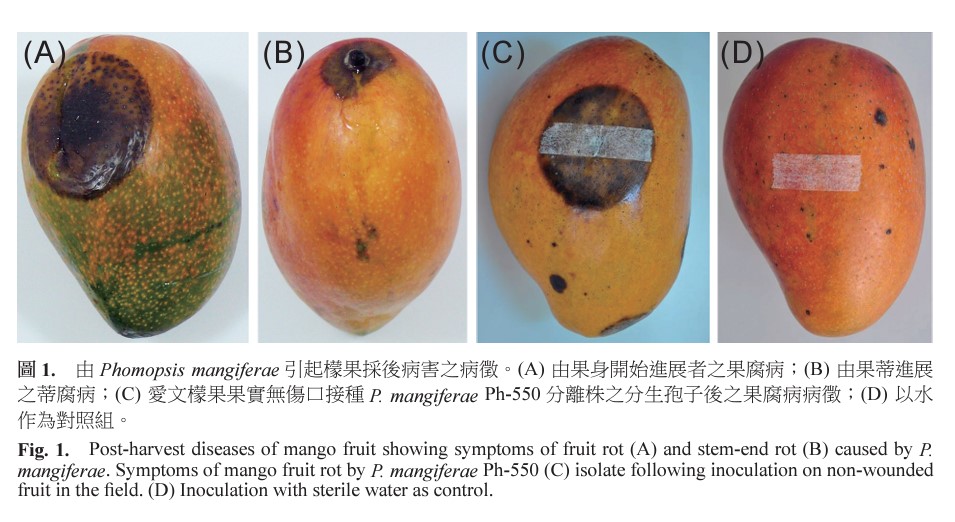All issues

Author:Chiao-Wen Huang, Hong-Ren Yang, Ching-Yi Lin, Sui-Li Hsu, Su-Yu Lai, Wen-Chi Ko, and Hui-Fang Ni*
Abstract:
Phomopsis mangiferae is one of pathogens causing stem-end rot or fruit rot disease of mango in Taiwan. The objectives of this study were to survey and screen fungicides for mango postharvest diseases caused by P. mangiferae. A field survey was performed at Yujing and Guntian Townships in Tainan City during 2009–2011. The results showed this disease incidence was 51.5% in Guntian, greater than 11.9% in Yujing. The results showed that P. mangiferae was the major pathogen of stemend rot or fruit rot disease of mango in Guntian Township. Moreover, three isolates of P. mangiferae, Ph-453, Ph-546 and Ph-550, were inoculated on immature mango fruits, and symptom of fruit rot appeared on the fruits after harvest and ripening. Pathogenicity tests indicated that all of three isolates were pathogenic to mango fruit after harvested. The ten fungicides (cyprodinil + fludioxonil, carbendazim + imazalil, iprodione, thiabendazole, carbendazim + hexaconazole, metiram, thiophanate methyl, azoxystrobin + difenoconazole, azoxystrobin and tebuconazole) were tested theirs efficacy on inhibiting mycelial growth and spore germination of P. mangiferae Ph-453, Ph-546 and Ph-550 isolates in vitro, respectively. The results showed that tebuconazole, azoxystrobin + difenoconazole, and carbendazim + hexaconazole had more than 97% of inhibition when their effective concentrations were from 10 mg a.i. L-1 to 100 mg a.i. L-1. cyprodinil + fludioxonil, azoxystrobin, and azoxystrobin + difenoconazole were effectively inhibited spore germination. These fungicides are currently recommended to the control of anthracnose for mango, and they could also be used to control the postharvest diseases of mango fruit caused by P. mangiferae in the field.
Key words:Mango (Mangifera indica), Post-harvest diseases, Phomopsis mangiferae, Fungicides screening
Download:![]() PDF Links
PDF Links
- 1. Development of Tractor-Mounted Seedling Transplanter for Sweet Potato
- 2. Synergistic Effect of Additional Gas on the Toxicity of Phosphine to Sitophilus oryzae and Sitophilus zeamais (Coleoptera: Dryophthoridae)
- 3. Effects of Temperature and Solar Radiation on Growth Traits and Plant Elements in Purple Leafy Sweet Potato
 Submit your manuscript
Submit your manuscript
 Guide for authors
Guide for authors